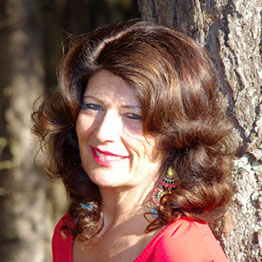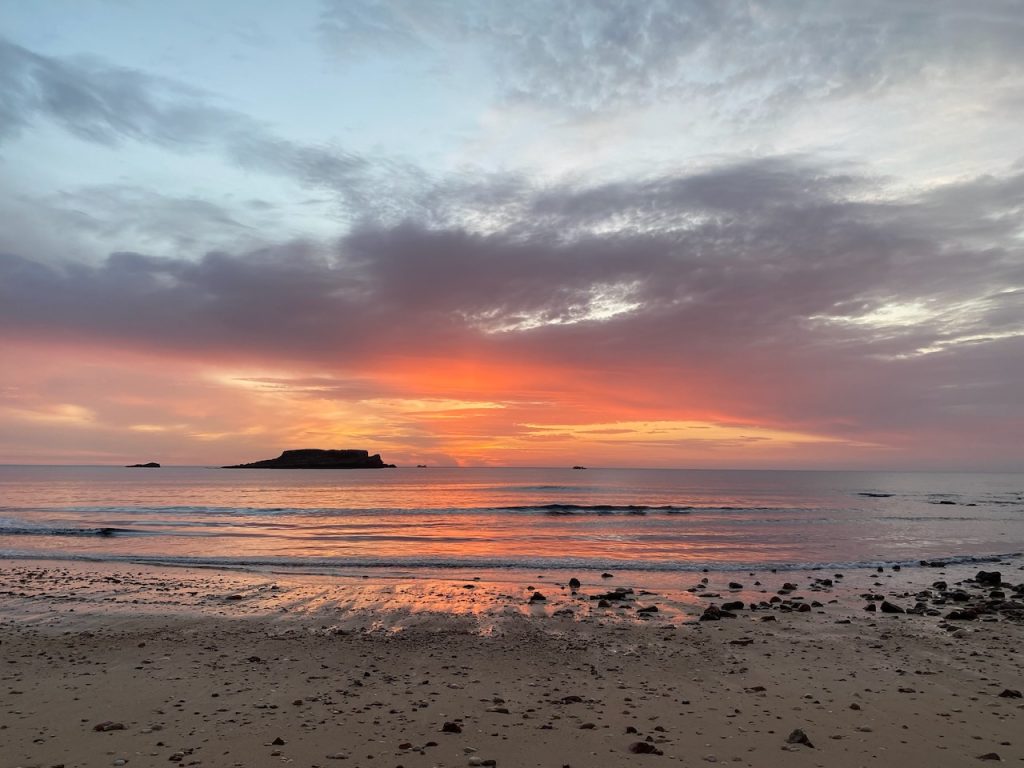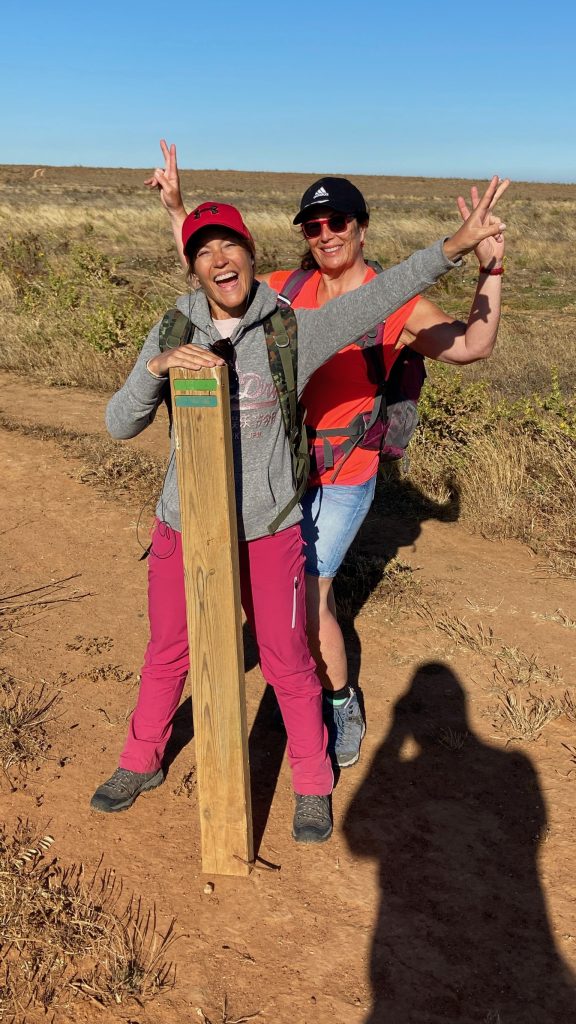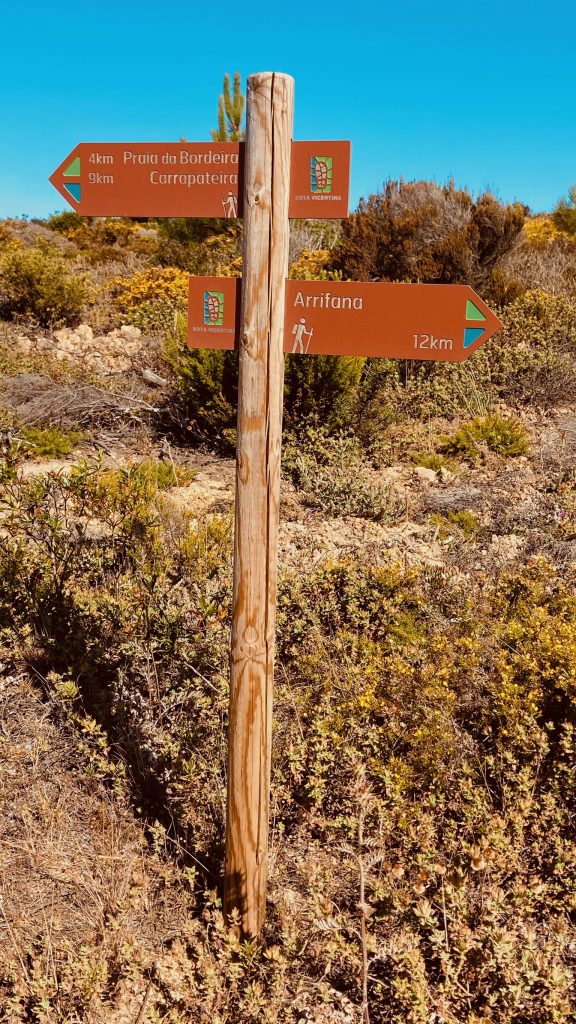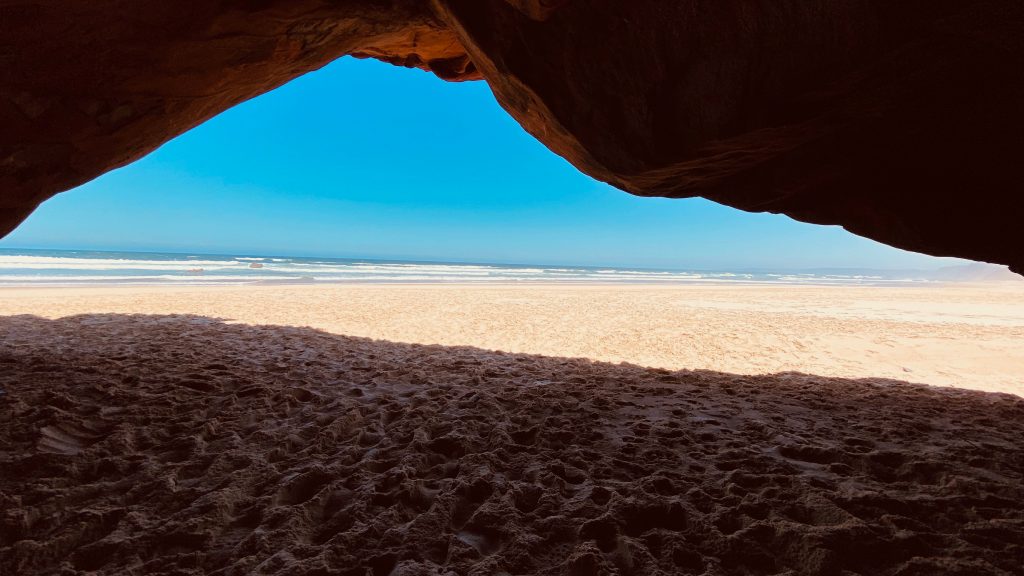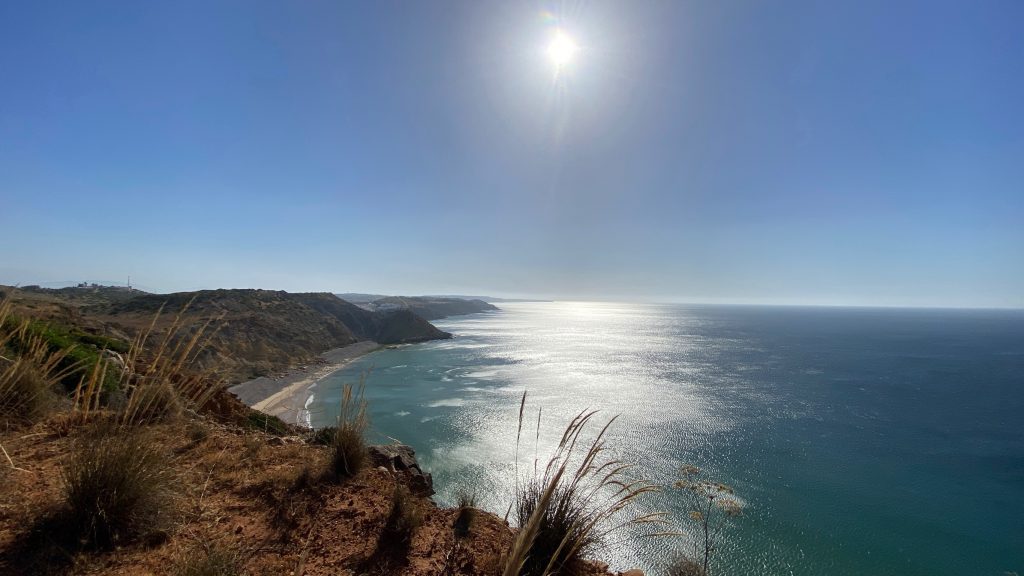Follow the Fisherman Trail (South) –
Atlantic Coast & Algarve
85 kilometres
Hike stages 8-13 of the Fisherman trail following the Atlantic coastline
Experience
Relax & recharge in the Vicentine Coast Natural Park (Portugal)
6 days
Genuine nature settings, endless ocean views, dream beaches

My Best Time Out
Welcome to your 6 days in motion.
A hike in the breathtaking nature of the Vicentine Coast Natural Park.
The inspiring power of the nature, stillness and time for yourself and the exchange with fellow participants create a unique experience for you to relax, recharge and refocus.
Group of max. 6 selected participants.
Main Highlights:
Praia do Arrifana
Sand Dune on Praia do Bordeira
Carrapateira Museum of the sea and land
Surfers Paradise – Praia do Amado
Extreme south-west tip of Europe
– Cabo São Vicente
Sagres fortress, harbour, fish auction & relaxing beaches
South coast – ‘Caribbean style’ beaches
Lagos ‘Ponta da Piedade’, cliff beaches, marina and old town
Arrival Day,
Arriving in Arrifana
After our meeting at Faro Airport we drive to Arrifana, the starting point of our 6-day journey. After a first glimpse at the Wild Atlantic at the beautiful Praia do Monte Clérigo, we enjoy a joint get-together dinner. The first accommodation provides us with a view along the entire west coast.
Day 1: Arrifana –
Monte Novo, 10 km
Hike from Arrifana through green hills to the hidden and remote Praia do Canal. Having an outdoor breakfast and maybe witnessing some early morning surfers. Tide permitting we’ll take a 1-2h stroll along the beach to the wild Praia de Vale Figueiras . Well warmed up we will already reach our accommodation in the early afternoon. Giving enough time to recover from the travel the day before at the pebble pool or in the jacuzzi.
Day 2: Monte Novo – Carrapateira, 15 km
We start our hike from Monte Novo to Carrapateira with the first warm sun rays. Crossing gentle hills and little Eucalyptus Forests offering endless views over the backland of the coast. At one point we will be struck by a breathtaking view on the Atlantic. For another 1-2 hours, we will walk on top of the cliffs towards the huge sand dune of the Praia do Bordeira. After a nice break on the beach, we will cross the Carrapateira platform towards the west coast surfers paradise – Praia do Amado.
Day 3: Vila do Bispo –
Sagres, 20 km
The warm sun in our back, we continue our journey towards Europes extreme south-west point – Cabo São Vicente. Surrounded by the subtle scent of the macchia, we enjoy far views on Sagres and the Lighthouse at the horizon. Soon we rejoin the coastline and walk on top of 100m high cliffs, offering incredible views into the tidal zone and unique 300 million year old geological formations. In line with the groups mood and energy we conclude the hike at Cabo São Vicente or tackle the final 6 km to Sagres.
Day 4: Sagres –
Rest day
In Sagres we take a rest. We can enjoy the beautiful sunrise in the cliffs in front of the fortress and after that go back to the hotel for another nap prior an extended breakfast. We have the rest of the day to explore the large fortress, visit the harbour and its fish auction – from where the entire Algarve is served – or just relax with our fellows on one of the four beaches. The sunset at the Cabo São Vicente lighthouse sets an impressive end to the rest day.
Day 5: Sagres –
Salema, 19 km
Today we face some more physical challenge. Having enjoyed the magic colours of the golden hour at Martinhal, we follow the south coast across a wide open plain with endless views. We discover a changed vegetation, new geological formations and a calmer ocean. After the descent to Praia Barranco, our hike turns into an exchange of climbs and descents. However, we are rewarded with five white ‘Caribbean style’ beaches. An unforgettable dinner at ‘O Lourenço’ with a great selection of local fish, makes us quickly forget the efforts of the day.
Day 6: Salema –
Lagos, 21 km
The final day offers a smooth and relaxed hike along the south coast in direction of Lagos. Plenty of time to take in again incredible views on the endless ocean and to rest in the villages Burgau and Praia da Luz or on top of the Rocha Nera between Luz and Lagos. The final part of the Trail takes us across Ponte da Pietade – Lagos main landmark and along its famous beaches hidden in dramatic cliffs. The long avenue of discoveries ‘Avenida dos Descrobimentos’ leads us to the Marina of Lagos – the end point of our 6-day journey.
For those interested in it –
Some more detail on history, geology and biology along the hike
70 km following the Fisherman Trail from Arrifana to Lagos
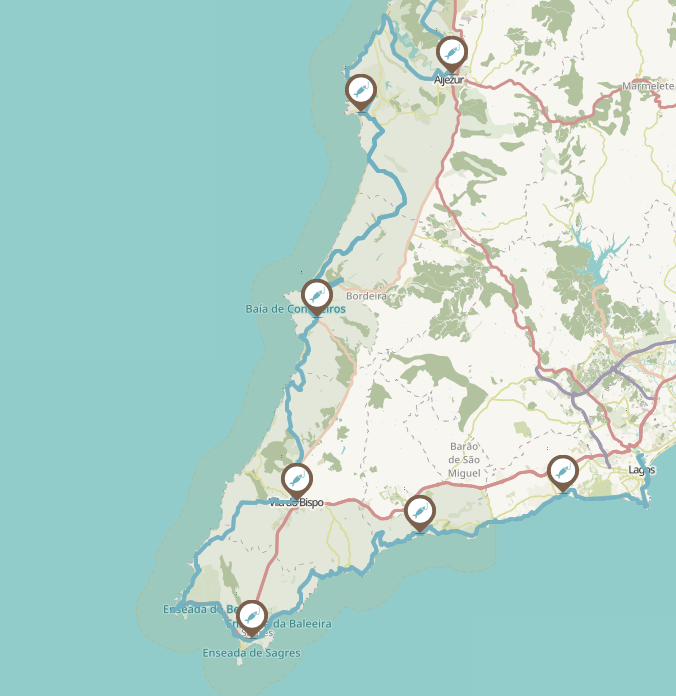
Arrifana » Monte Novo» Vila do Bispo
The small fishing ports have operated since remote times in the most sheltered places of the coast, naturally sheltered from north and northwest winds. Some of the most fished species on this coast are sardines, mackerel, meagre, monkfish, lobster, Mediterranean moray, European conger, octopus, Atlantic seabream, European bass, red porgy, horse mackerel and goose barnacles.
On this route, the cliffs reach up to 100 meters high, displaying rocky strata with spectacular folds and presenting a rich geological history. When the supercontinent Pangea was formed, the clash between continents lifted, compressed, split and folded the continental shore rocks and the sediments deposited on the ocean floor, forming mountains with altitudes of more than 4000 meters. The present rocks of the cliffs (schist and grauvaques) have resulted from these giant movements of the compression of sedimentary strata that occurred more than three hundred million years ago!
The sustenance of the people of the southwest coast of Portugal has always been linked to the sea, and the land, too hard to work. In the most fertile and fresh lands near the streams, people grow corn, beans, potatoes, tomatoes, broad beans and chickpeas. The sargassum (seaweed) has been used as fertilizer. On the slopes, the rich flora provides grazing land to the cattle and supports bees that produce a fine and aromatic honey.
Ready to go?
Reviews
You are protected from any loss of money by our Terms & Conditions. Read more here: Terms & Conditions
What’s included in the price?
Our aim is to create an individual experience for your safe, breathtaking and unforgettable Time Out!
Not included: Flights to/from Faro, extra nights, excursion tickets, lunches, dinners, drinks, individual airport transfer, special voluntary activities: massages, dolphin watching, power boat trip
f.a.q.
Our experience shows that six is the ideal group size to create the right balance of diversity and intimacy. It’s small enough to allow for real connection, yet large enough to bring different perspectives and stories into the
space.
For you, this means being part of a carefully chosen group where every voice is heard. For us, it allows the presence and attention needed to support each of you individually, to sense the group’s dynamics, and to ensure that everyone has a unique and meaningful experience.
We walk exclusively on paved hiking trails or along long beaches. The subsoil changes between earth, gravel and sand. A good level of fitness is required to be able to enjoy the daily stages (10 – max. 18km). Good surefootedness is required for some of the ascents and descents.
No, we recommend not packing more than 10kg in your backpack. Just indulge in minimalism and only pack what is absolutely necessary (see our packing list). A liberating experience of traveling with less luggage. If this is not for you and you don’t want to do without anything, just bring a separate suitcase. We transport this from accommodation to accommodation and you pack what you need for the day in your backpack every day.
We have put together a packing list for you. As said, you are welcome to bring more and we will transport that for you.
We stay in 3* Hotels and B&Bs. You have a comfortable bed and your own bathroom every day. Most of the accommodations are embedded in the small towns along the Fishermans trail and – if you like – also invite you to explore them in the evening.
Strengthening your physical energy is an important part of the retreat. That’s why we pay a lot of attention to nutritious food. The breakfast, which we eat outside in nature, consists of fresh foods rich in vitamins, minerals and proteins, which we procure locally in organic markets and from local producers. In the restaurants and accommodations where we have lunch and dinner, there is a rich offer of local fish and seafood, meat, vegetables and salads. The cuisine is mostly local Portuguese. Appealing vegetarian/vegan options are of course available everywhere. Do you have special needs, just talk to us 🙂
The Algarve climate is mild, little rain, very sunny and has a Mediterranean character. As early as May, temperatures rise to 20°C, from June they quickly climb towards 25°C. However, the Atlantic remains comparatively cool even in midsummer. Only from July do the water temperatures slowly reach a bathing temperature of 20°C.
Extreme heat does not exist in the Algarve. At least not on the coast. Even in midsummer peak values over 30°C are rather the exception. The sea breeze, which reliably blows from the Atlantic to the mainland, also cools you down. In the sheltered hinterland, on the other hand, record temperatures of up to 40°C are not uncommon in July and August.
Most rain falls in southern Portugal between November and March. Despite frequent rainfall, it remains pleasantly mild even during the winter months. During the day, temperatures still reach an average of 15°C to 17°C.
Time outs 2025
Southwest Alentejo and Vicentine Coast Natural park (Portugal)
Southwest Alentejo and Vicentine Coast Natural park (Portugal)
Time outs 2026
Southwest Alentejo and Vicentine Coast Natural park (Portugal)
Southwest Alentejo and Vicentine Coast Natural park (Portugal)
We are happy to get to know you in person and to jointly find out,
if a Time Out on the Fisherman Trail is the right thing for you.



